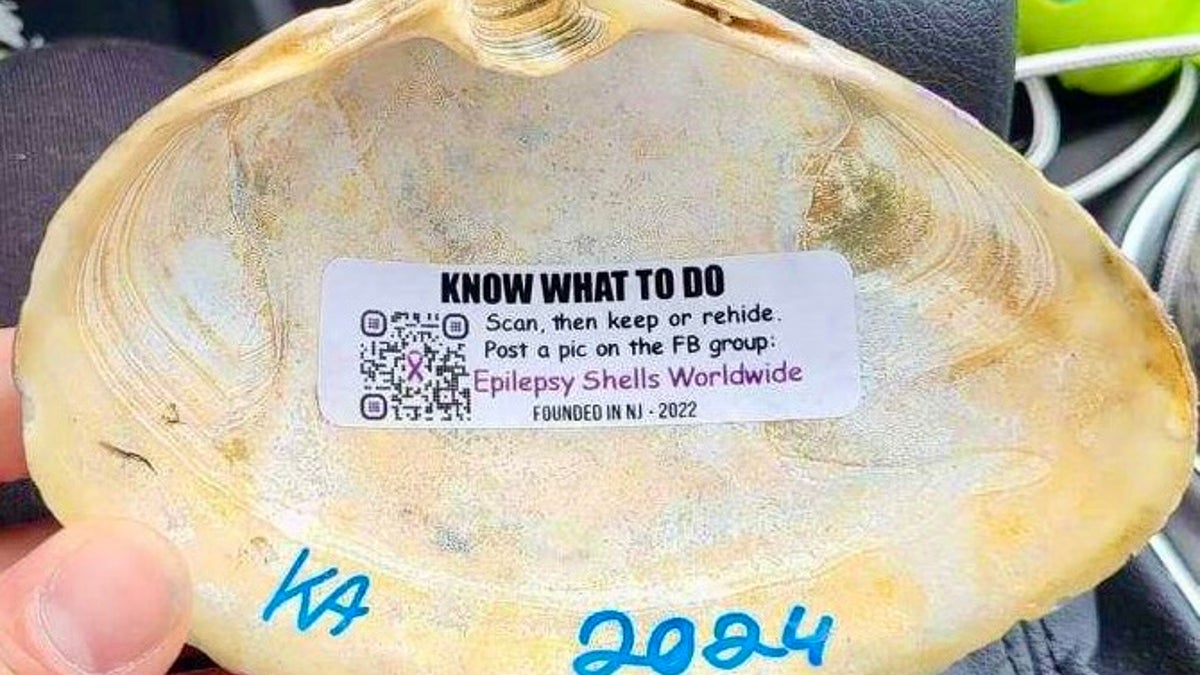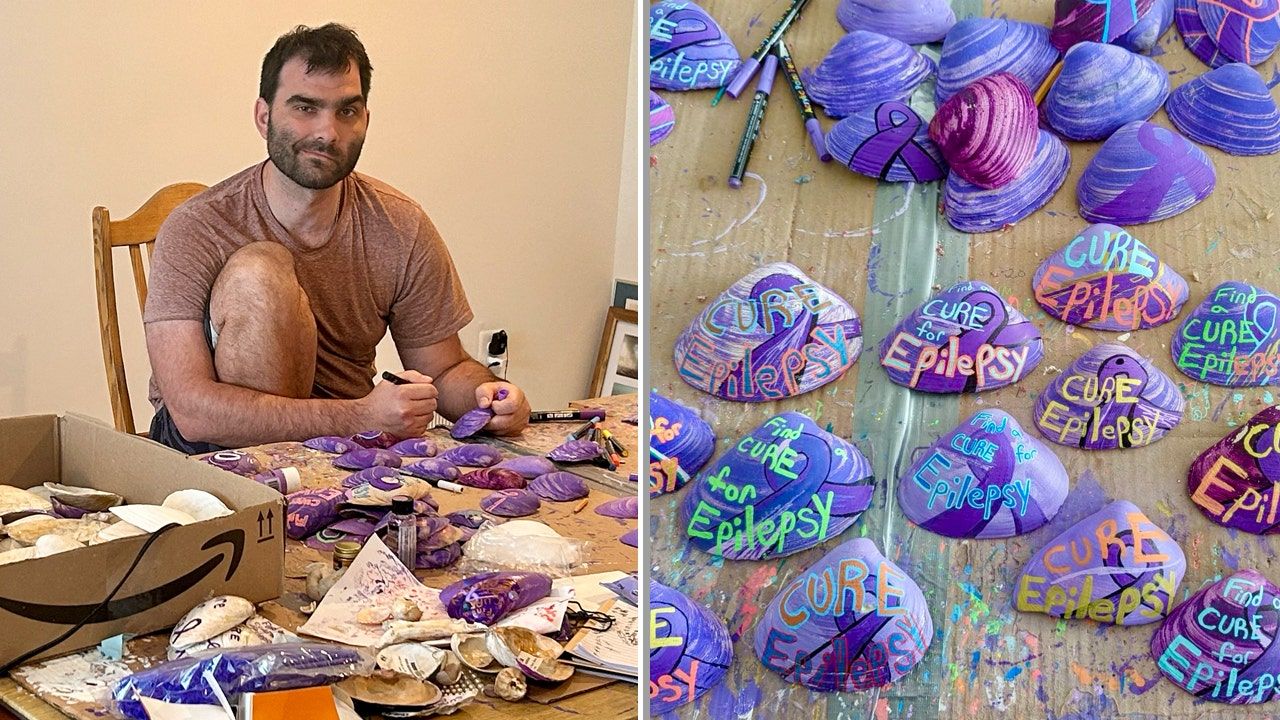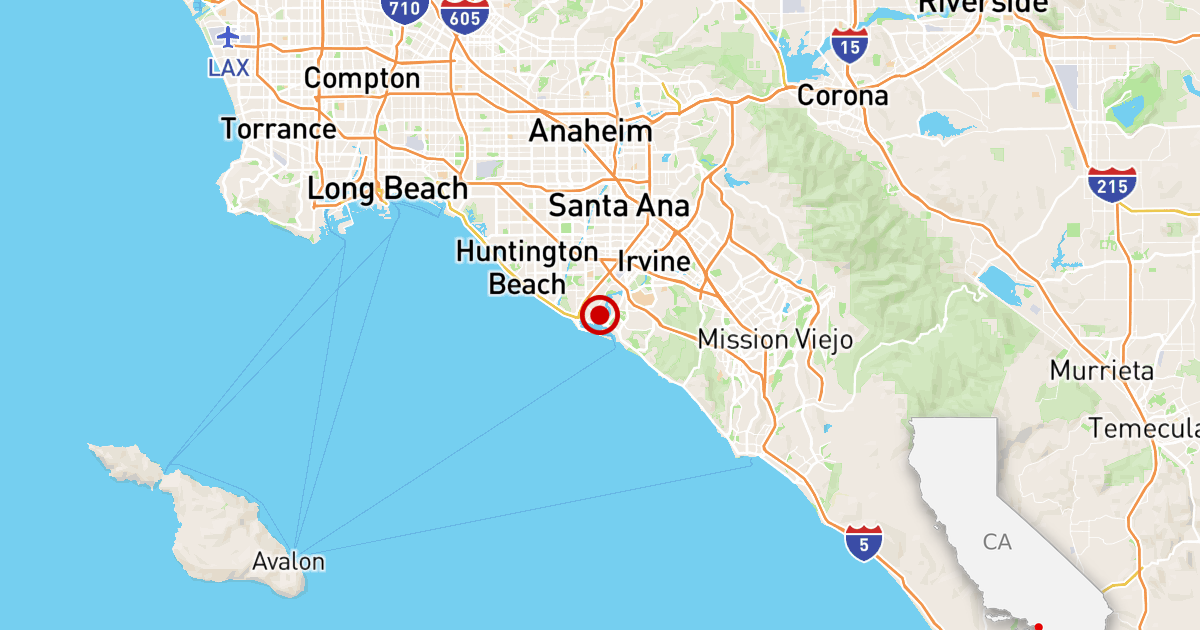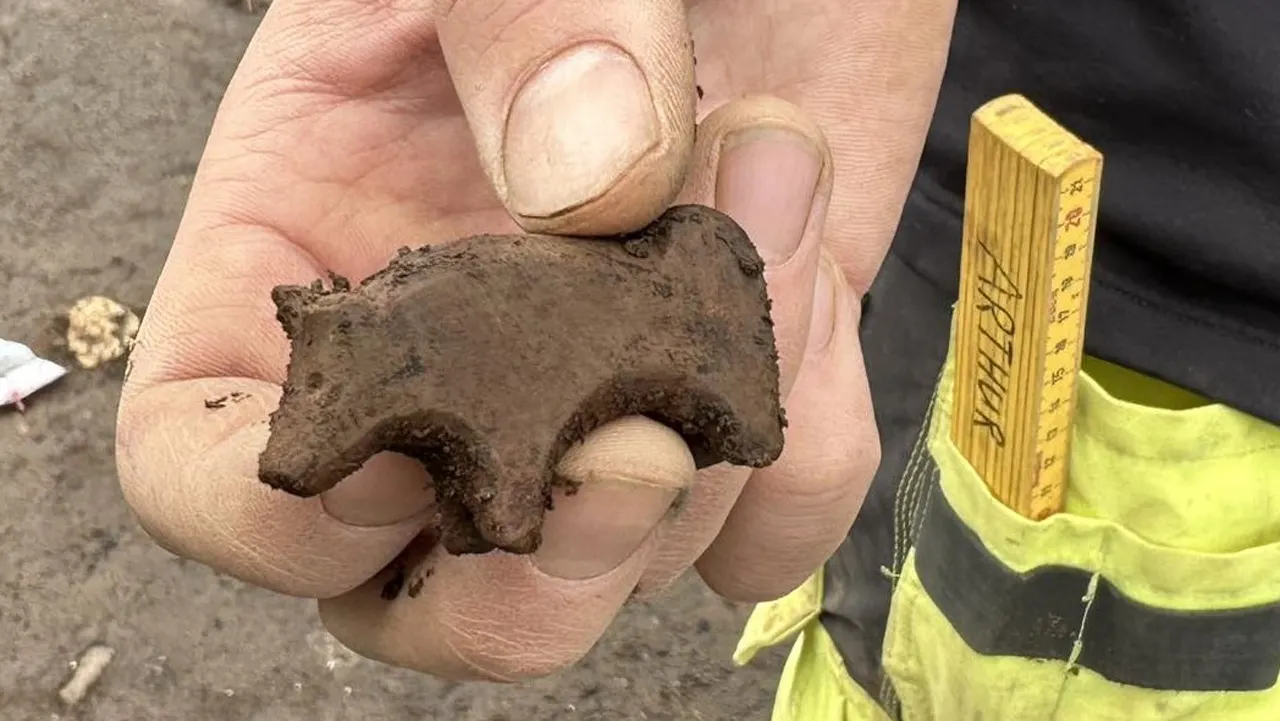Raising awareness about epilepsy could be as simple as a walk on the beach, thanks to a New Jersey man.
Kyle Adamkiewicz, 33, has lived with epilepsy since he was diagnosed at age 6. Now he's combining his love of art with the power of nature to help bring his seizure disorder In the spotlight.
In October 2022, Adamkiewicz began collecting seashells from the New Jersey Shoreand then paints and decorates them with heartfelt messages in search of a cure. She places her artwork along boardwalks in hopes that it will inspire strangers to spread the word—and the shells.
OHIO WOMAN WITH EPILEPSY FINDS SECURITY WITH HER SERVICE DOG
“I started out just painting a bunch of shells and I thought no one would find them,” Adamkiewicz said in an interview with Fox News Digital.
“And then I saw people posting them online and writing lots of good, positive comments about the shells and about finding a cure for epilepsy. That motivated me to keep doing more and more.”
Kyle Adamkiewicz, pictured above and now 33, has lived with epilepsy since he was diagnosed at age 6. He is combining his love of art with the power of nature to help raise awareness about his condition. (Adamkiewicz family)
“And now they've been all over the world.”
Adamkiewicz doesn't drive, so his parents, Chuck and Laurie Adamkiewicz, drive him to place his shells.
A PENNSYLVANIA MOTHER SEEKS A 'PERFECTLY MATCHED' BONE MARROW DONOR TO CURE HER DAUGHTER'S RARE DISORDER: 'A CRUCIAL NEED'
“We carry projectiles with us in the car all the time, and he puts them in different places, in different cities,” his mother told Fox News Digital.
Adamkiewicz estimates that he has painted about 1,100 shells so far.
Many include messages about finding a cure for epilepsy, but she has also created themed designs for various occasions, such as Shark Week and Halloween.

Adamkiewicz has painted more than 1,000 shells so far. “Our living room is made up of nothing but shells and paint,” Adamkiewicz's mother jokes. (Adamkiewicz family)
“Our living room is made up of nothing but shells and paint,” Adamkiewicz's mother jokes.
In addition to a hand-painted design, each shell features Adamkiewicz's initials, the year he decorated it, and a QR code.
When people find the shells and scan the QR code, they are directed to a website. From there, they can access Adamkiewicz's Facebook group, his Instagram account and a GoFundMe page set up to help raise money for people to acquire “anti-seizure” dogs.
THE GIRL WHO CAN'T SMILE: HOW A RARE DISORDER BECAME A YOUNG WOMAN'S 'GREATEST' GIFT
It also contains a link to the Epilepsy Foundation's website, where people can learn what to do if they see someone having a seizure.
“Most people don't know how to treat someone who is having a seizure,” Adamkiewicz told Fox News Digital. “They just turn their back and walk in the opposite direction.”

In addition to a hand-painted design, each shell features Adamkiewicz's initials, the year he decorated it, and a QR code. (Adamkiewicz family)
“One in 26 people in the world has epilepsy, but it is actually a hidden disease that nobody wants to know about.”
The Adamkiewicz family has a world map hanging on the wall, with thumbtacks to mark where the shells were found, they told Fox News Digital.
In addition to locations across the United States, shells have also been scanned in Mexico City, Greece, Italy, Panama, Canada, Nova Scotia, France, South Korea and Germany, Adamkiewicz said.
“One in 26 people in the world has epilepsy, but it is basically a hidden disease.”
“People find the shells and take them to those places,” Adamkiewicz said. “And sometimes they ask me for shells to take with them wherever they travel.”
She also partnered with the hospital to involve children with epilepsy in her project, bringing them shells so they can paint their own designs.
Touching lives
In addition to helping find a cure, Adamkiewicz aims to reduce bullying of people with epilepsy.

Adamkiewicz is pictured with his mother, Laurie Adamkiewicz. In April, he underwent a procedure to implant a reactive neurostimulation (RNS) device in his brain, which will collect data on his seizure activity. (Adamkiewicz family)
“When I was little, if my parents or my brother weren't there, I was always made fun of at school and in the neighborhood,” Adamkiewicz said. “Especially after I had a seizure, kids would stare at me and make fun of me.”
She continued: “I want people to know that it's okay to be friends with someone with epilepsy.”
8-YEAR-OLD OHIO BOY PREPARES FOR BLINDNESS: 'IT'S HEARTBREAKING,' SAYS HIS MOM
At one point during second and third grade, he estimates he was having 100 seizures a day.
“It's been a very hard and lonely life for Kyle, and very painful to watch as a mother and father,” Laurie Adamkiewicz added.
The goal, he said, is for the shells to help make life a little easier for people with epilepsy and their families.

Adamkiewicz said his seashell project has been a therapeutic activity for him. “If I've had a really bad day, that's what I do,” he said. (Adamkiewicz family)
Adamkiewicz's mother recalled a man who posted a personal experience on the Facebook group.
“His son had passed away and the man would go to the sea every morning to say good morning to his son,” she said. “And there was the shell for epilepsy and he said he started crying. He said it was like a gift for him.”
He added: “You never know whose lives you are impacting.”
Taking control
Since age 12, Adamkiewicz has been a patient at New York University Langone's Comprehensive Epilepsy Center, one of the largest programs in the country, where he has undergone a series of brain surgeries.
TWINS FROM NEW JERSEY RECEIVE MATCHING HEART SURGERIES AFTER MARFAN SYNDROME DIAGNOSIS: 'A BETTER LIFE'
In April, he underwent a procedure to implant a responsive neurostimulation (RNS) device in his brain, which will collect data on his seizure activity.
Neurosurgeon Peter Rozman, MD, performed the surgery along with his mentor, Werner K. Doyle, MD, Adamkiewicz's longtime physician.

Adamkiewicz and his mother, Laurie Adamkiewiz, are pictured with some of their painted shells. (Adamkiewicz family)
“This system has the ability to record brain activity in the form of electrical waves that detect when seizures begin, so it can send an impulse to the brain at that moment, with the aim of aborting the seizure,” Rozman said in an interview with Fox News Digital.
Data collected by the device is sent to the neurologist, who uses that information to program the device to better capture and treat seizures, he said.
“Over time, people see more and more improvement in their seizures,” Rozman said.
CLICK HERE TO GET THE FOX NEWS APP
Rozman praised Adamkiewicz's seashell project and stressed the importance of raising awareness about the condition.
“And it also gives you an outlet,” the doctor said. “It can be very helpful to have other people to talk to about your illness and be part of a community.”

Each shell contains a QR code that a person can scan to access information, resources and fundraisers for epilepsy. (Adamkiewicz family)
In some ways, Rozman said, Adamkiewicz is turning his epilepsy into a good thing.
“It's a win-win for both parties: to raise awareness and also to allow Kyle to have more control and lead the story,” he said.
CLICK HERE TO SUBSCRIBE TO OUR HEALTH NEWSLETTER
“It can be a very devastating thing to have to deal with on a daily basis, and having some kind of license and control over that is really important.”
Adamkiewicz acknowledged that his project has been a therapeutic endeavor for him.
“We want to teach people how to be kind and how to help.”
“If it's been a really bad day, that's what I usually do,” he said.
“Today, for example, I was painting some shells and I had my headphones on, listening to some music. I'm so focused on painting the shells that I don't pay attention to the others.”

Adamkiewicz shells have been found in many cities and countries around the world, including Paris, France. (Adamkiewicz family)
Adamkiewicz and her mother are also working on a children's book to teach children more about epilepsy and what to do if someone has a seizure.
“When someone has a seizure, it can be scary for other kids,” said parent Laurie Adamkiewicz.
For more articles on health, visit www.foxnews/health
“The goal is to spread information to eliminate the stigma that weighs on people with epilepsy. We want to teach people to be kind and to help.”












